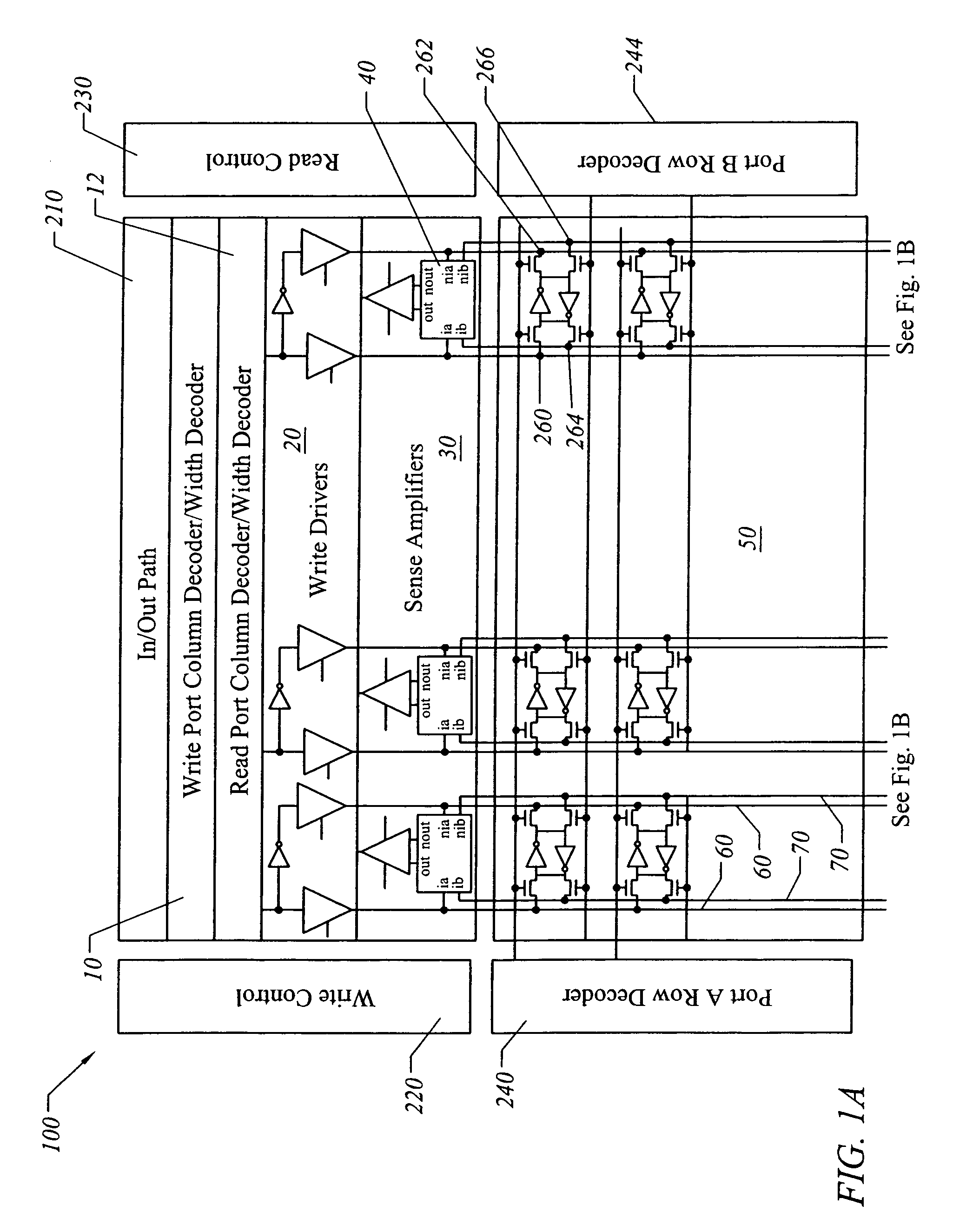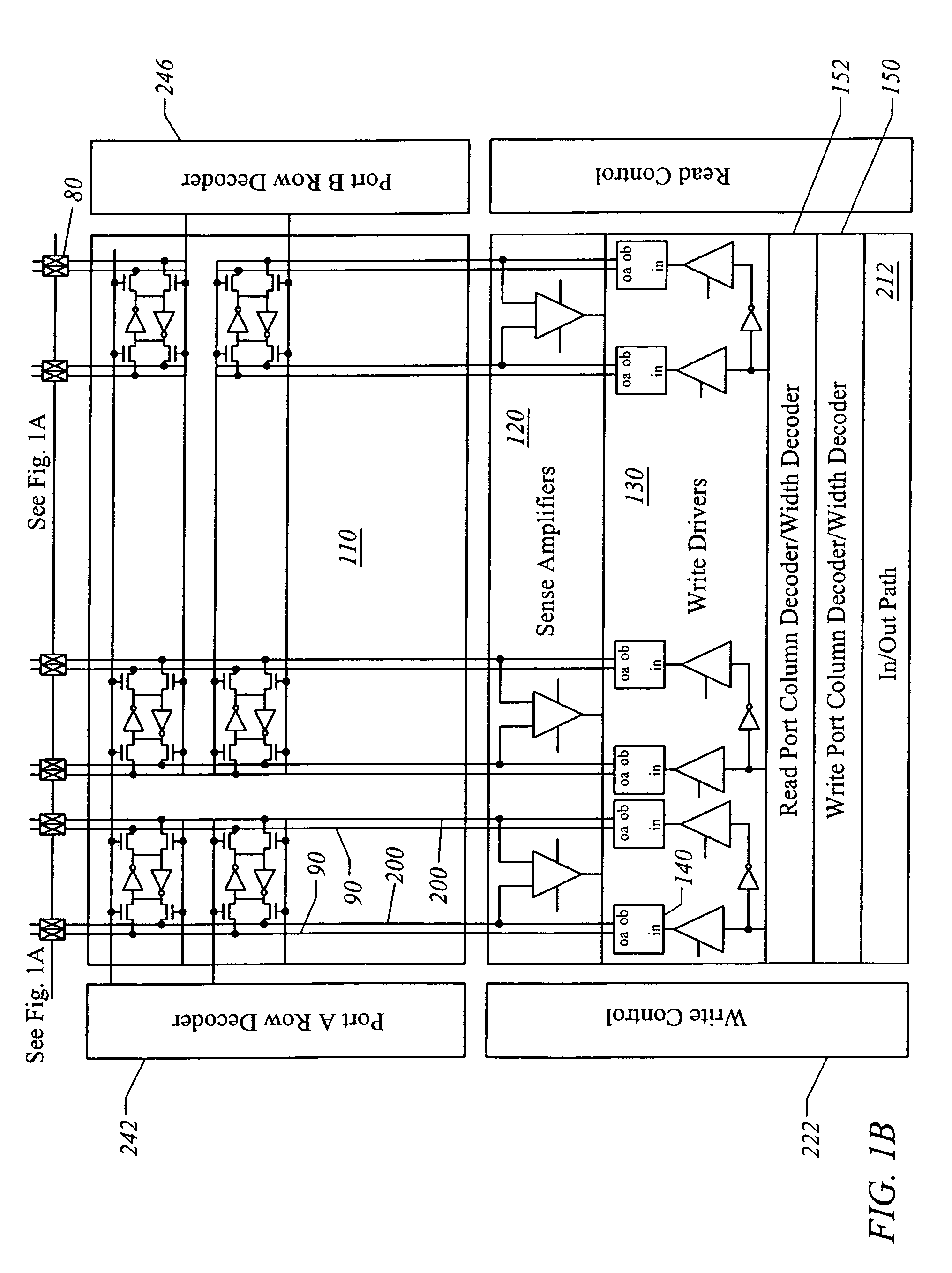Divisible true dual port memory system supporting simple dual port memory subsystems
a dual-port memory and sub-system technology, applied in the field of memory systems, can solve the problems that the conventional sram system cannot be effectively divided into several sram sub-systems, and achieve the effects of low block count, high bit density, and low block coun
- Summary
- Abstract
- Description
- Claims
- Application Information
AI Technical Summary
Benefits of technology
Problems solved by technology
Method used
Image
Examples
Embodiment Construction
[0018]The present invention relates generally to memory systems. More specifically, the invention provides a divisible true dual port (TDP) memory system supporting simple dual port (SDP) memory subsystems. Merely by way of example, the invention has been applied to field-programmable gate arrays (FPGAs), but it would be recognized that the invention has a much broader range of applicability.
[0019]FIG. 1 is a simplified divisible memory system according to an embodiment of the present invention. This diagram is merely an example, which should not unduly limit the scope of the claims herein. The circuit 100 includes column decoders 10, 12, 150 and 152, write drivers 20 and 130, sense amplifiers 30 and 120, multiplexers 40, demultiplexers 140, memory arrays 50 and 110, bit-lines 60, 70, 90 and 200, switches 80. Additionally, the circuit 100 includes in / out paths 210 and 212, write controls 220 and 222, read controls 230 and 232, and row decoders 240, 242, 244, and 246. Although the ab...
PUM
 Login to View More
Login to View More Abstract
Description
Claims
Application Information
 Login to View More
Login to View More - R&D
- Intellectual Property
- Life Sciences
- Materials
- Tech Scout
- Unparalleled Data Quality
- Higher Quality Content
- 60% Fewer Hallucinations
Browse by: Latest US Patents, China's latest patents, Technical Efficacy Thesaurus, Application Domain, Technology Topic, Popular Technical Reports.
© 2025 PatSnap. All rights reserved.Legal|Privacy policy|Modern Slavery Act Transparency Statement|Sitemap|About US| Contact US: help@patsnap.com



